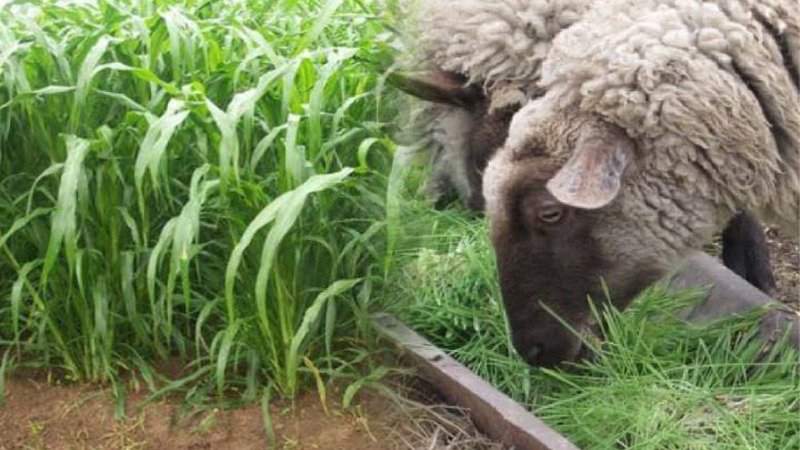Farmers are uneducated about excellent quality seeds and best procedures, leading to a substantial loss in production per acre. Green fodder is the primary food source for animals.

Green fodder for animals is typically scarce in Punjab, despite the fact that it is as crucial and required for livestock growth as excellent food is for human existence. Farmers are uneducated about excellent quality seeds and best procedures, leading to a substantial loss in production per acre. Green fodder is the primary food source for animals.
We cannot expand the space for green fodder production while still growing food and income crops. As a result, there’s an immediate need for us to develop a plan that would significantly enhance fodder output per acre.
Experience has shown that if we follow proper land selection and preparation, healthy seeds, appropriate fertilizer usage, timely cultivation, irrigation, tolerance, other agricultural elements, and expert suggestions, we may boost fodder crop yield per acre by two to three times. A strategy is required to boost fodder production so that we have fodder even during times of scarcity.
As a consequence, Kharif fodder can play an essential role since it can be grown from spring (March) until the end of Kharif (August-September.) We can produce fodder for the fall season of May-June by early cropping and fodder for the fall period of October-November by late cropping.
Sorgham, evergreen, milliet, maize and mat grass are the most important kharif fodder crops. Sorghum is an important summer crop and popular animal feed. Depending on the cultivar, it contains 7 to 12 percent protein. Since sorghum is heat and drought resilient, it may be grown effectively in most parts of Punjab. Its grain is the greatest poultry feed.
Punjab’s climate is perfect for the cultivation of this crop. As a result of its drought resistance, this crop may be grown effectively in both rain-fed as well as irrigated regions of Punjab. The above fodder’s authorized varieties are JS 2002, JS 263, Chakwal sorghum and Chakwal 2011.
Sorghum may also be cultivated on saline sodic soil; however clay loam with adequate drainage is preferable for maximum yield. Plowing and harrowing should be used to soften and nourish the soil. The flatness of the ground is essential.
Fodder plants can be planted from March to August depending on the season whereas seed crops should be planted in July. For fodder crops apply 32-35 kg per acre and for pulses apply 6 to 8 kg healthy seed per acre. Cultivating in rows is usual practice, however for high output; grow in rows one foot apart. Producers in rain fed areas could raise seed rate for seed crop production while taking weather patterns in mind.
Two to three irrigations are required for a sorghum crop. Irrigate the crop three weeks after sowing and again as needed. Allowing the seed crop to get dry during grain development will reduce yield and grain quality.
Never feed a forage crop to animals if it is less than three feet tall and dry as it creates a poisonous compound called hydrocyanic acid (HCN), which is extremely damaging to animals. If someone wishes to pay for animal fodder, they should irrigate the crop and harvest the top of the fodder, which they should then blend with other available fodder and feed to the animals.
In general, no poison is used on the fodder crop; however, if the seed millet crop is badly infected with stem borer, cabbage fly and other pests apply suggested granular destroying material to prevent their assault.
Within event of a mite infestation spray with an appropriate pesticide as directed by the Agricultural Department and refrain from cutting feed for at minimum 20 days after spraying. Red Leaf Spot attacks the sorghum crop and rust attacks the seed crop. To avoid these diseases grow healthy seeds with approved fungicides. In the seed crop the sick plant’s stalks should be chopped and burned from the field reducing disease transmission significantly.
At 50% blooming, the fodder crop should be harvested. Studies have revealed that watering the crop a few days before harvesting enhances fodder yield dramatically. Harvesting at this time of the year results in a high yield and appropriate nutrients. When the seed harvest is mature in November, the stalks should be chopped and collected in a dry spot, then tied in bunches to feed the animals over the winter.
Sorghum contains energy, Carbohydrates, dietary fiber, protein and fat. Due to high nutritional contents sorghum can be easily used as fodder at large scale.
This article is jointly authored by Muhammad Majid Islam and Muhammad Qadeer.